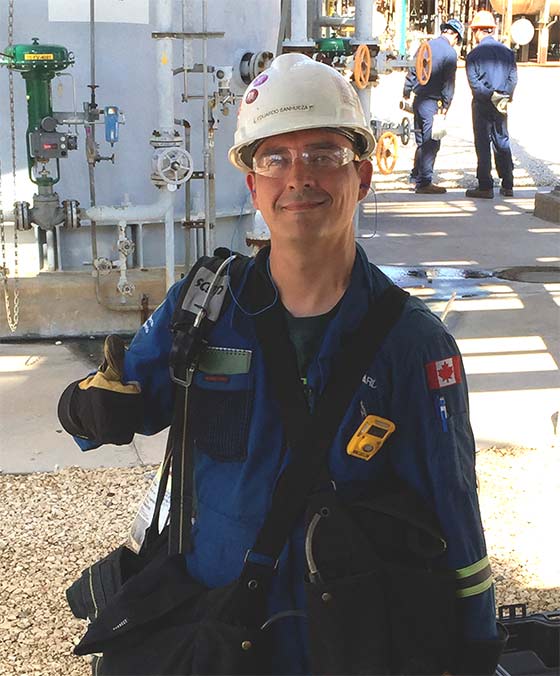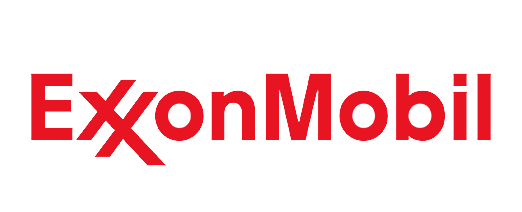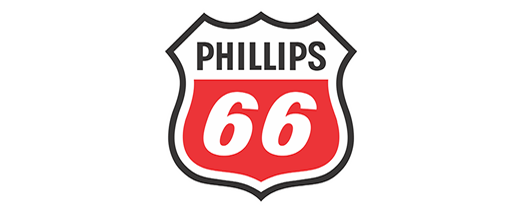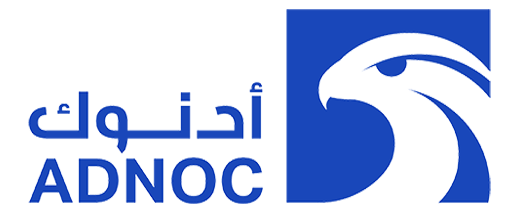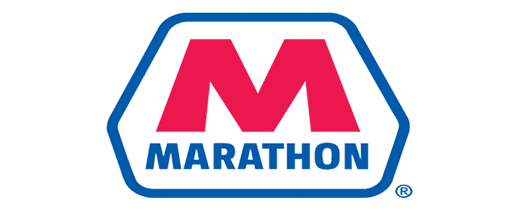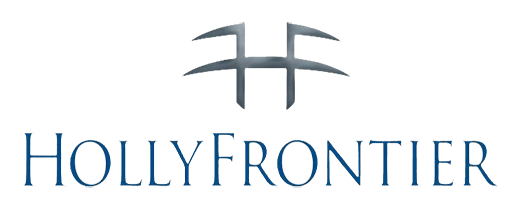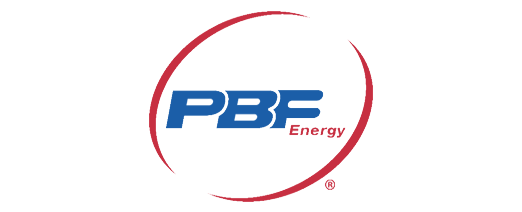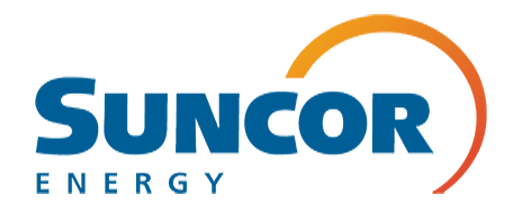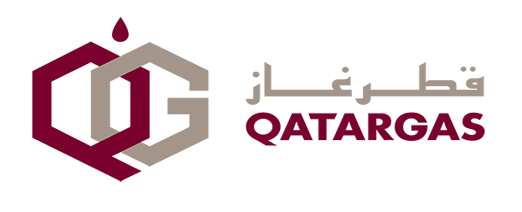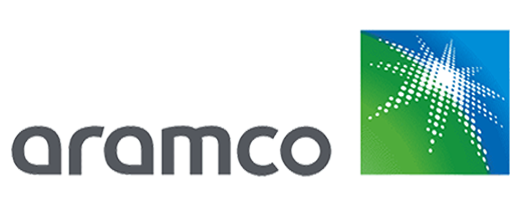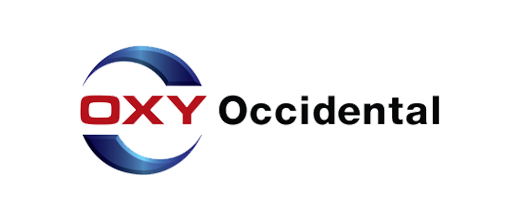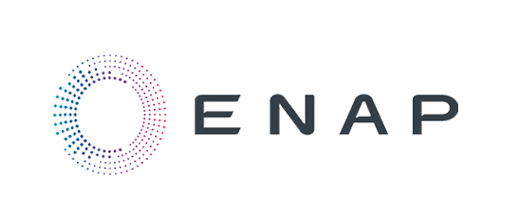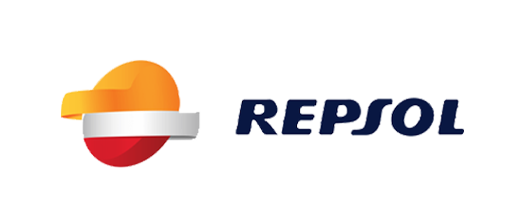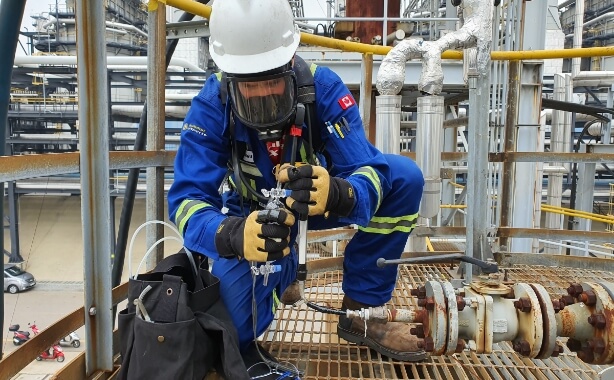
Analytical
Services
Quality over quantity, that is the expert difference. We only use research-grade equipment to deliver accurate data and proven results, imperative when making sound process and engineering decisions.
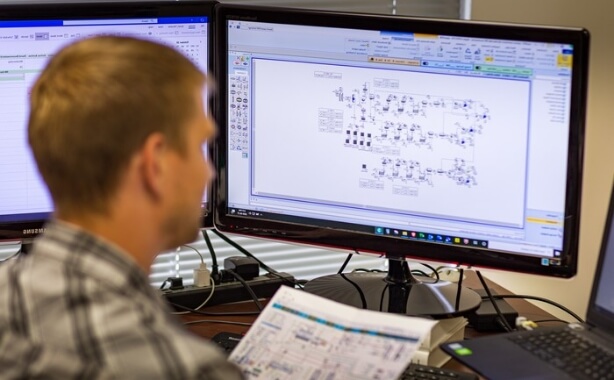
Engineering
Studies
With our 50 years of onsite process experience and design evaluations, our engineers execute using the critical link between theoretical and practical engineering solutions.
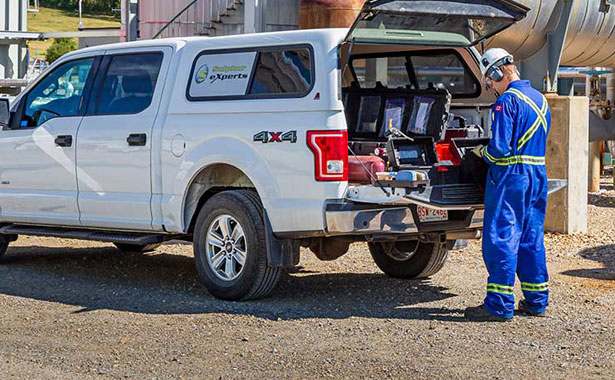
On-Site
Support
Our team takes a holistic approach when problem-solving for current issues and future operational goals. Every process and problem is unique, we find the best solution for you.
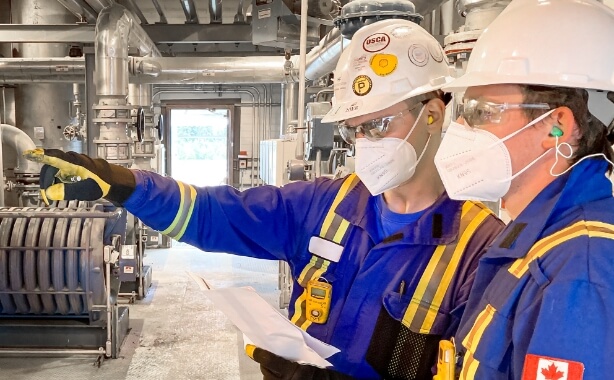
Technical
Training
The success of your unit is dependent on the knowledge and experience of your team. We give your operators, engineers, and managers the tools and confidence to safely and reliably operate your process unit.
On-Site Support
Amine Treating
- Amine Treating Analysis – Degradation and Contamination
- Corrosion Troubleshooting and Prevention
- Data Evaluation and Process Optimization
- Foaming Troubleshooting
- On-Site Sampling and Process Fluid Analysis
- Sour Water Stripper Testing and Troubleshooting
- Biofeed Impact on Amine System Foaming and Emulsions
- HVO Plant Corrosion Troubleshooting
Gas Dehydration
- Data Evaluation and Process Optimization
- On-Site Sampling and Analysis
- Solution Degradation and Contamination
Sulphur Recovery
- Catalyst Evaluation
- Performance Guarantee and Compliance Testing
- Plant Inspection and Turnaround Support
- Plant Start-up and Shutdown Support
- Plant Testing and Troubleshooting
- Pre-Commissioning and Commissioning Support
- Sampling and Process Gas Analysis
- Biofeed Impact on SRU Reaction Furnace Temperature
- Biofeed Impact on SRU Tail Gas Treating Units
Analytical Services
Amine Treating
- Amine Treating Analysis – The Basics
- Bulk Gas Analysis
- Reflux Water and LPG Analysis
- Biofeed Impact on Gas Compositions
Gas Dehydration
- Field Testing
- Glycol Analysis
- Water Dewpoint Analysis
Sulphur Recovery
- H2S in Liquid Sulphur Recovery Analysis
- Process Gas Analysis
- Solid Sulphur Recovery Analysis
Engineering Studies
Amine Treating
- Amine Treating Conversion
- Capacity Evaluation and System Bottlenecking
- Capital Project Support
- Equipment Reviews
- Plant Design Review
- Start-up and Initial Operations Phase Support
- Biofeed Impact on the Amine Absorbers
- Biofeed Impact on the Sour Water Stripper
Gas Dehydration
- Capacity Evaluation
- Capital Project Support
- Emissions Studies
- Equipment Review
- Facility Start-up Support
- Plant Design Review
Sulphur Recovery
- Air Control System Improvement Projects
- Plant and Equipment Design Review
- Process Selection Studies
- Process Simulation Studies
- Reliability Studies
- Turndown and Capacity Increase Studies
- Biofeed Turndown Studies
- Biofeed Impact on SRU Reaction Furnace Temperature
Technical Training
Amine Treating
- Amine Treating and Sour Water Stripping Course
- On-Site Amine Treating Course
- Advanced Amine Treating & Sulphur Recovery Course
Gas Dehydration
- Gas Dehydration & Refrigeration Course
- On-Site Gas Dehydration Course
Sulphur Recovery
- Sulphur Recovery Course
- On-Site Sulphur Recovery Course
- Advanced Amine Treating & Sulphur Recovery Course
Amine Treating Analysis – Degradation and Contamination
A full study of the content of an amine treating sample is required to properly assess and troubleshoot the amine treating system. The identification of contamination or degradation products is crucial to begin any troubleshooting exercise. Like a normal analysis, if these detailed investigations are carried out periodically, the resulting history will be invaluable for ongoing process assessments and troubleshooting problems.
Degraded and contaminated amine treating can result in poor acid gas absorption, foaming, corrosion, or regeneration problems. Exact quantities and speciation of the contaminants can only be done by chemical analysis; however, several on-site observational and simple analytical techniques can help determine the root cause(s) and effect of the current contamination in the amine treating. We will evaluate the potential side-effects of a degraded or contaminated amine treating in the system, as well as recommend the appropriate remedial action.
Our clients can send us a sample of amine treating for analysis, just send us a sample size of 1 litre filled almost to the top of a glass or plastic bottle, minimizing any air pockets. The bottle must be individually labelled, properly protected in an appropriate shipping container with an MSDS (Material Safety Data Sheet) attached.
A degradation and contaminant analysis includes:
- amine treating concentration
- water content
- heat-stable amine treating salts (total % amine treating bound)
- H2S loading
- CO2 loading
- GC analysis of the solvent (to identify degradation products)
- suspended solid content and qualitative component identification
- pH
- metal scan (Fe, Mn, Cr, Ni, K, Na)
- visual appearance
- mass balance
- foam test results
- evaluation report with results and targets
Additional analyses available
- Ion Chromatographic (IC)
- analysis of all organic and inorganic acids
Have us contact you
Corrosion Troubleshooting and Prevention
Uncontrolled or surprise incidences of corrosion in an amine treating plant can be catastrophic for employee health, production, equipment, and the environment. Corrosion can be a result of one factor, or several factors acting together. We specialize in taking a holistic approach to ensuring corrosion is mitigated through a full evaluation of gas and liquids composition, the design and metallurgy of the corroded areas of the plant, and its operating conditions. We can trace many potential corrosion mechanisms and highlight the connection between corrosion and operating parameters, such as amine treating circulation rate, solvent temperature, amine treating concentration, and rich loading.
Once the source and cause of corrosion have been identified, we can assist with the next steps, whether it be the installation of a protective coating (epoxy, thermal spray, etc.) or a new type of gas distributor.
Have us contact you
Data Evaluation and Process Optimization
Assessing plant operating and test data allows for a quick evaluation of the degree of H2S and CO2 pick-up, hydrocarbon, and sulphur species solubility. As well as the composition of both the acid gas feed to the sulphur plant and the flash gas off the flash drum. A heat and material balance will indicate how closely the facility is operating compared to the design and/or theoretic equilibrium. Process simulation software using current test data, operating parameters and mechanical performance is an effective tool to identify where and what changes may be required to ensure the amine treating plant is operating in an efficient and cost-controlled manner.
Our on-site services allow us to make immediate, on-the-spot process recommendations to improve plant efficiency. While clearly explaining why the necessary actions were taken.
Have us contact you
Foaming Troubleshooting
Amine treating systems are notorious for their tendency to foam, and the root cause is frequently masked by other problems. Amines treating foam very easily as they are quite sensitive to contamination, anything which affects amine treating surface tension or viscosity can lead to foaming. Although foaming can be controlled in the short term with the proper use of an effective antifoam, it is best to eliminate the underlying causes of foaming as a long-term solution.
To eliminate foam, the root cause of the foaming must be determined. Amine Experts specialize in thorough evaluations of all possible sources of foam-promoting contaminants: what are they, where are they coming from, and how to stop them. We find the solution to the problem through an extremely detailed investigation of the possible root causes and all contributing factors.
Foaming troubleshooting can be intensive, as a proper investigation involves research into the design, operation, and chemistry of the system. Often, long-term solutions involve more than just changing a filter or increasing lean amine treating temperature – a combination of several elements is required. Once implemented, it is tested to be sure the system and its operators are well equipped to face the challenges of contamination long after we leave the site.
Have us contact you
Sampling and Process Fluid Analysis
Amine Experts can analyze almost every type of hydrocarbon gas or LPG stream with all major components quantified down to parts-per-million. A typical performance test involves analyzing the gas or LPG streams in and out of the amine treating absorbers, the flash tank off-gas, and the acid gas from the amine treating regenerator. We also sample the lean and rich amine treating from each absorber, rich amine treating from all-flash tanks, reflux water from the reflux accumulator, and any other pertinent gas or liquid samples. Completing the analyses on-site means the sample integrity is preserved.
This information provides the basis for:
- assessing plant performance
- providing operating guidelines
- verifying the integrity of operating windows
- process simulation
- improved system safety and reliability
- qualitative cost savings from system optimization and amine treating loss reduction
- assessment of corrosion sources and corrosion and fouling potential
- foaming troubleshooting
- evaluation of amine treating solution degradation and sources of other system contaminants
- material balance calculations
Our experts will provide a complete gas or LPG composition breakdown. We use gas chromatographs (GCs) with proprietary columns to provide the appropriate speciation. Depending on the type and composition of the samples, our GCs are outfitted with bulk gas detectors specifically calibrated and tuned for all inert gas species, hydrocarbons up to C10, and extensive sulphur species. Options for complete isomer speciation of hydrocarbons are also available. Liquid Petroleum Gas (LPG) samples are taken in robust “piston cylinders” and directly injected onto the GC – which eliminates losses from flashing– and is the only proven method for an accurate LPG analysis.
Liquid amine treating samples are analysed for many key parameters, often beyond what is normally provided by an amine treating vendor’s lab. This helps in diagnosing and controlling foaming and corrosion problems. Our custom-built foam test kits and solids-identification techniques have proven invaluable when troubleshooting plant problems, making operational changes, then, within hours being able to test again to determine their success.
Have us contact you
Sour Water Stripper Testing and Troubleshooting
Amine Expert’s offers a full range of sour water stripper engineering services ranging from diagnosing and resolving fouling and corrosion to the advanced challenges of meeting stripped water specifications.
SWS Design and Design Review Studies: We will review the proposed design or prepare the conceptual design for a new sour water stripper, or a revamp of the existing unit. As there are many designs and concepts available, we can help with the decision-making process to help balance capital costs against future operability and expected shutdown schedules.
SWS Product Quality Investigation: Meeting ammonia and sulphide specifications in the treated water can be a challenge. In addition to fouling, multiple other contaminants can make meeting specifications next to impossible. Adding complexity to the issue, sour water samples can deteriorate if not analysed shortly after collection. Many refinery labs are not equipped for detailed analysis of aqueous solutions, and often not in the short time frame required. Our field crews can safely and accurately collect the liquid and gas samples and analyze them on-site. These analytical results will then be used to build a realistic simulation of the plant and to troubleshoot it. Amine Treating Experts has an excellent track record of resolving operational challenges of this nature.
SWS Spent Caustic Disposal Investigation: Similarly, to the product quality investigation above, this investigation focuses on determining if and in what quantity spent caustic can be disposed of into the sour water system, and the measures and equipment needed for this to be done while meeting the treated water specification.
SWS Plant Test and System Review: An analytical test is combined with an engineering review of the system. Representative sampling and analysis will be performed on all pertinent gas and liquid streams, and a simulation of the unit is built to optimize treating and energy use. Potential threats to the reliability of the unit will be assessed and solutions presented.
SWS System Fouling Investigation: Sour water can cause extreme fouling of the associated equipment and is also a very corrosive service. Unfortunately, many strippers require more frequent shutdowns than the rest of the refinery which can have a significant economic impact. Our fouling investigations are extremely rigorous and entail connecting a specialised in-situ filtration and coalescing test rig to the sour water feed to collect particulate and liquid hydrocarbon-based fouling precursors at operating conditions. This installation permits us to accurately analyze and then diagnose the root cause of the fouling. Fouling can also be exacerbated by several things: corrosion products, salt deposition, elemental sulphur, polymerization. Through this process, fouling is either eliminated or a mitigation strategy defined to restore the SWS unit’s runtime to fit normal turnaround schedules.
Have us contact you
Biofeed Impact on Amine System Foaming and Emulsions
Amine units are highly susceptible to foaming, and the by-products from processing biofeedstocks in upstream treating units (such as FCC and hydrotreaters) will likely excacerbate the foaming tendency in the absorbers or regenerators. Amine Experts have decades of experience troubleshooting our clients’ foaming problems in amine systems. We can help in three ways:
- Identify the contaminant and the root cause(s) of the foaming,
- Provide a short-term solution by directly testing the effectiveness of alternate anti-foams,
- Provide long-term solutions through operational and process change recommendations to mitigate the foaming tendency and minimize future foaming episodes.
Have us contact you
HVO Plant Corrosion Troubleshooting
Amine systems in Hydrogenated Vegetable Oil (HVO) plants – or refineries co-processing the biofeedstock at greater CO2 to H2S ratios – may be more vulnerable to CO2 corrosion. Amine Experts take a holistic approach to corrosion root-cause analyses (RCA). And we can help design your corrosion RCA and strengthen your mitigation plan.
Have us contact you
Data Evaluation and Process Optimization
Assessing plant operating and test data allows for a quick evaluation of the quality of water pick-up, hydrocarbon species solubility, and glycol circulation. A heat and material balance will indicate how closely the facility is operating compared to the design and/or theoretical ideal. Process simulation software using current test data, operating parameters and mechanical performance is an effective tool to identify where and what changes may be required to ensure the plant is operating in an efficient and cost-controlled manner.
Our on-site services allow us to make on-the-spot process recommendations to improve plant efficiency. The theory behind each suggestion will also be made clear. Optimizing an existing plant can result in:
For EG Refrigeration Systems
- Cost savings resulting from optimized injection rates, minimized glycol loss, reduced equipment repair, and energy usage
- Improved phase separation in the Low-Temperature Separator
- Optimized spray nozzle design and circulation rate
- Reduced Filter consumption and fewer “freeze-ups”
For Glycol Gas Dehydration Systems
- Cost savings resulting from reduced glycol loss, equipment repair, and energy usage
- Improved treated gas quality and circulating glycol condition
- Reduced foaming incidents, filter consumption, and fewer “upsets”
For Solid Desiccant Systems
- Cost savings resulting from optimized cycle times; reduced regeneration frequency and, ultimately, extending bed life.
- Reduced contamination of the desiccant
- The proper desiccant choice for the application
Have us contact you
Sampling and Analysis
Dehydration Experts will collect gas samples and data to carry out the necessary analysis, the results of these tests will provide the basis for detailed engineering studies used for process evaluation and optimization. Following these services, we will provide short- and long-term recommendations for optimization or turnaround requirements. A typical refrigeration plant testing involves analyzing the inlet and outlet gas streams from the plant-produced NGL streams, and flash gas(es). The results give the resulting dew point of the product gas and the quality of the NGL (an independent check for specification requirements).
Analytical services include:
- on-site gas and liquid sampling
- on-site gas analysis to determine all process stream components
- on-site live measurement of water content in gas streams
- on-site solids analysis (qualitative identification), solution and foam tests
- customized data collection
The on-site support from Dehydration Experts includes a complete gas or NGL composition breakdown including:
- Hydrocarbons up to C9
- All sulphur species: H2S, COS, CS2, SO2, and mercaptans
- BTEX
- Bulk gases: H2, N2, CO2, CO, etc.
The standard Gas Dehydration and EG/Refrigeration health check package is economical and gives the Client insight into the current plant health and performance. It covers the following aspects of the system:
- Review condition of the glycol (colour, clarity, solids)
- Determine the lean and rich glycol concentrations via a refractometer
- Calculate the required circulation rate for the conditions and compare to the current rates (adjust as required based on expected throughput in the unit)
- Review emissions equipment (BTEX tanks, stripping gas, vent odours)
- Rapid on-site analysis of the gas streams with the specialised standalone GC onboard the service truck (up to C9).
- On-line measurement of the water dew point in a gas stream
- Review pump performance
- Comparison of old to new spray nozzle characteristics (∆P performance, pattern, angle, droplet size) when removed from service
- Review filtration condition and performance
- Review reboiler operations
Have us contact you
Solution Degradation and Contamination
Degraded and contaminated glycol can result in poor water absorption, foaming, corrosion, or problems with regeneration. The exact quantity and speciation of the contaminants can only be done by off-site chemical analysis, however, several on-site observational and simple analytical techniques can help determine the root cause(s) of the observed contaminants in the glycol. We will evaluate the potential side-effects of degraded or contaminated glycol in the system, as well as provide recommendations for the appropriate remedial action.
Untreated, the contaminated glycol can result in the following significant problems:
- Off-spec treated gas
- Increased risk of foaming or emulsions
- Plugged trays or packing
- Fouled heat exchangers and reboiler fire tubes and the consequently increased energy usage
- Plugged or degraded/worn spray nozzles resulting in hydrate formation or tube damage
- Increased risk of erosion/corrosion of glycol piping, regeneration equipment, mechanical equipment
- Increased OPEX from the additional additives required to combat the contaminated glycol. Cleaning and flushing the system and the associated downtime to complete the task, accompanied by additional labour hours and the cost of a new chemical.
- Potential additional CAPEX if the corrosion is severe enough to warrant equipment replacement or upgrades.
Have us contact you
Demo Placeholder4
Degraded and contaminated glycol can result in poor water absorption, foaming, corrosion, or problems with regeneration. The exact quantity and speciation of the contaminants can only be done by off-site chemical analysis, however, several on-site observational and simple analytical techniques can help determine the root cause(s) of the observed contaminants in the glycol. We will evaluate the potential side-effects of degraded or contaminated glycol in the system, as well as provide recommendations for the appropriate remedial action.
Untreated, the contaminated glycol can result in the following significant problems:
- Off-spec treated gas
- Increased risk of foaming or emulsions
- Plugged trays or packing
- Fouled heat exchangers and reboiler fire tubes and the consequently increased energy usage
- Plugged or degraded/worn spray nozzles resulting in hydrate formation or tube damage
- Increased risk of erosion/corrosion of glycol piping, regeneration equipment, mechanical equipment
- Increased OPEX from the additional additives required to combat the contaminated glycol. Cleaning and flushing the system and the associated downtime to complete the task, accompanied by additional labour hours and the cost of a new chemical.
- Potential additional CAPEX if the corrosion is severe enough to warrant equipment replacement or upgrades.
Have us contact you
Demo Placeholder5
Degraded and contaminated glycol can result in poor water absorption, foaming, corrosion, or problems with regeneration. The exact quantity and speciation of the contaminants can only be done by off-site chemical analysis, however, several on-site observational and simple analytical techniques can help determine the root cause(s) of the observed contaminants in the glycol. We will evaluate the potential side-effects of degraded or contaminated glycol in the system, as well as provide recommendations for the appropriate remedial action.
Untreated, the contaminated glycol can result in the following significant problems:
- Off-spec treated gas
- Increased risk of foaming or emulsions
- Plugged trays or packing
- Fouled heat exchangers and reboiler fire tubes and the consequently increased energy usage
- Plugged or degraded/worn spray nozzles resulting in hydrate formation or tube damage
- Increased risk of erosion/corrosion of glycol piping, regeneration equipment, mechanical equipment
- Increased OPEX from the additional additives required to combat the contaminated glycol. Cleaning and flushing the system and the associated downtime to complete the task, accompanied by additional labour hours and the cost of a new chemical.
- Potential additional CAPEX if the corrosion is severe enough to warrant equipment replacement or upgrades.
Have us contact you
Catalyst Evaluation
The catalytic stages of an SRU are a critical component of the sulphur recovery process. Every major commercial tail gas clean-up process (EUROCLAUS/SUPERCLAUS®, Amine-Based, Sub-Dewpoint) contains catalytic stages that are critical to achieving the additional sulphur recovery efficiency. Poor operating conditions, poor activation procedures, bad start-ups, deactivated catalysts, or improper catalyst selection are often the major causes of efficiency loss, permit violation, and equipment damage in a facility. Our on-site detailed catalyst evaluations determine the current performance of a catalyst, the optimized operating conditions, and the potential need for a catalyst change.
A catalyst evaluation is especially valuable before an upcoming plant turnaround to determine if a catalyst change is warranted, or after a major plant upset which has resulted in degraded performance. Our detailed catalyst evaluations provide accurate data and the technical support required for optimum catalyst performance and effective planning for catalyst replacement.
The detailed Sub-Dewpoint catalyst evaluation will typically include:
- Catalyst activity and temperature profile evaluation
- Evaluation and optimization of bed switching schedule
- Review of the catalyst regeneration temperature profiles
- Optimal catalyst bed operating temperatures, sulphur recovery dew-point temperatures, and sulphur recovery dew-point depression at current load conditions
- Recommendations on required catalyst rejuvenation or replacement
The detailed EUROCLAUS®/SUPERCLAUS® catalyst evaluation will typically include:
- Catalyst activity and temperature profile evaluation, with recommendations on rejuvenation and replacement
- Determination of catalyst activity, selectivity, and yield compared to expected values
- Evaluation of selective oxidation airflow meter and excess Oxygen concentration
- Optimal reactor operating temperature and oxidation air addition
The detailed Amine-based tail gas unit catalyst evaluation will typically include:
- Catalyst activity and temperature profile evaluation, with recommendations on replacement
- A total load of sulphur recovery components to the reactor
- Reactor demand for reducing gases
- SO2, COS, CS2, and CO concentrations in the reactor effluent compared to equilibrium values
- Optimal catalyst bed operating temperature
- Sulphur Recovery balance across the reactor
The detailed Claus catalyst evaluation will typically include:
- Catalyst activity and temperature profile evaluation
- Optimal catalyst bed operating temperatures, sulphur recovery dew-point temperatures, and sulphur recovery dew-point optimization at current load conditions
- COS and CS2 hydrolysis rates and their effect on the overall plant efficiency
- Recommendations on required catalyst rejuvenation or replacement
Have us contact you
Performance Guarantee and Compliance Testing
All SRU’s are designed to meet a specific sulphur recovery efficiency and most are required to comply with a regulated recovery efficiency or an SO2 emission limit. When a new SRU is designed and built, or if an SRU is significantly modified, a performance guarantee test is commonly part of the agreement between the designer and the owner. For some existing SRU’s an annual or bi-annual compliance test is part of the regulatory requirement.
Performance Guarantee and Compliance testing involve determining the compositions of the SRU feed gases, the tail gases, and other selected points throughout the process, to assure that the unit meets the guarantee requirements or environmental compliance. Most commonly the focus is on the overall unit recovery efficiency or the concentration of SO2 in the tail gas or incinerator, although in some cases, only the performance of a part of the unit, such as a tail gas treatment unit is guaranteed. Typically, a Guarantee and Compliance test follows a strict protocol set by the Licensor or the governing body for several days of testing at certain predetermined times each day. Not meeting the required sulphur recovery efficiency often results in significant monetary consequences and the worst case a forced shutdown of the facility. In some instances, we can work with the Owner or Licensor to tune and prepare the SRU to perform at its optimum point before the acceptance test phase begins.
We can provide support to all parties involved in compliance and guarantee testing should some discrepancy occur in terms of, test conditions, process requirements, schedule, or test duration. As an impartial third party, we are often called upon to provide middle ground testing and support to all such agreements.
Have us contact you
Plant Inspection and Turnaround Support
Sour gas processing and sulphur recovery plants operate under continuous severe conditions and must be scheduled for routine inspection and maintenance regularly for optimum performance. Depending on the severity of the service, a comprehensive plant turnaround is typically scheduled every two to five years to address critical maintenance issues. The integrity of your equipment is critical to ensuring excellent performance over the long term. We provide timely on-site plant inspections and evaluations to ensure that performance requirements are maintained over the life of the unit.
Our on-site inspection and turnaround support assists clients to:
- Pre-shutdown plant walkthroughs and turnaround plan reviews
- Shutdown assistance to ensure that equipment is not damaged during this procedure
- Vessel inspections during a turnaround, including ancillary items such as refractory, ferrules, burners, catalyst mesh, and screens, demister pads, utilities, etc.
- Expert advice regarding repairs to vessels, tubes, piping, steam tracing and jacketing, refractory, etc.
- Supervision of catalyst loading and catalyst activation procedures
- Assistance with the commissioning of any new vessels installed during a turnaround
- Start-up assistance to ensure that equipment is not damaged during this procedure
Have us contact you
Plant Start-up and Shutdown Support
The start-up and shutdown of SRU and Tail Gas Units (TGU) can pose a significant risk to plant equipment and personnel. These risks include fires, explosions, corrosion, melting of refractory and ferrules, sooting/plugging, and catalyst damage which dictate that specialised procedures be developed and followed, to ensure the units are effectively controlled. The integrity of the equipment and the safety of personnel is paramount. Effective planning, with the right information, can minimize these risks, extend catalyst life, and minimize time and costs involved with the shutdown, turnaround, and start-up.
Our start-up and shutdown support activities include:
- Review of operating manuals and written start-up /shutdown procedures
- Review of operating data associated with the previous start-up and shutdown periods
- Discussions with plant personnel regarding current start-up and shutdown steps, and suggestions for procedure modifications that would improve the efficiency, safety, and cost of the start-up and shutdown
- On-site assistance and monitoring of all key start-up and shutdown activities
- Analytical gas analysis during both fuel gas and acid gas operations
Sulphur Experts has multiple personnel with decades of start-up and shutdown experience and we are industry renowned to help support our clients for a safe and extremely efficient Start-up and Shutdown. This includes Claus plants, SUPERCLAUS® / EUROCLAUS® plants, amine tail gas units, and others. A full list of resumés and references is available upon request.
Have us contact you
Plant Testing and Troubleshooting
Many sudden issues arise in SRUs that may decrease sulphur recovery or unit throughput. These can cause environmental license violations, unplanned unit shutdown, safety concerns, and could harm lucrative upstream processes. Our team can provide both pre-scheduled and rapid mobilization to your facility to conduct plant testing and troubleshooting.
SRU’s benefit from regular testing and monitoring. Our testing and monitoring programs can help with initial on-site improvement to virtually every type of SRU. The overall sulphur recovery efficiency can then be optimized by review the operation of each unit in the SRU. Special focus is given to the condition of the converter catalyst since activity and lifecycle is often a determining factor in shutdown or turnaround timing. Additionally, a regularly scheduled monitoring program can assist with the ongoing operation and optimization of the SRU as process conditions change and catalyst activity decreases over time. Further improvements will be given after we conduct a full review of the data analysis and process simulation.
Depending on the testing or troubleshooting requirements, the Sulphur Experts’ site team would consist of a Lead Engineer and an Analytical Specialist furnished with specialised testing equipment. They will collect the necessary process samples and analyze them on-site using our proprietary GC-based analytical system. Our engineers will gather operating data, verify analytical results taken on-site, and can conduct simulations using HYSYS®. In some situations, the lead engineer will work with our client to make process changes to tune the system to better performance. Coupling our analytical accuracy with our extensive engineering experience on-site allows us to test, optimize, and troubleshoot our client’s SRUs to improve long-term performance, safety, and reliability.
Have us contact you
Pre-Commissioning and Commissioning Support
The reliable and optimized operation of a new Sulphur Recovery Unit is directly related to the quality of the work done during the pre-commissioning and commissioning phases. We can provide on-site and remote support in all process- and equipment-related pre-commissioning and commissioning activities to prepare your sulphur recovery and tail gas treating units for a smooth start-up.
Our pre-commissioning and commissioning support activities include, but are not limited to, the following:
- System prioritization and standard operating procedure review
- Equipment inspection before delivery or after installation
- Plant walkthrough and system verification
- Supervision of catalyst loading and catalyst blowout procedures
- Tail gas unit catalyst activation
- Refractory dry-out assistance
Have us contact you
Sampling and Process Gas Analysis
The foundation of our SRU testing and troubleshooting services is the ability to sample and analyze a wide variety of process gas streams under challenging conditions. Sulphur Experts pioneered many of the key sampling and analytical methods used in the industry and enlist our proprietary techniques to generate results that represent the true process flow conditions.
Sulphur Experts provide specialised analytical services in the following areas:
- Feed gas analysis
- Acid gas analysis
- SRU and TGU interstage process gas analysis
- Tail gas analysis
- SAGD off-gas analysis
- Sulphur Recovery pit vent gas analysis
- Sour fuel gas system analysis
- Merox™ system process gas analysis
- IGCC sour stream analysis
- LPG analysis
Our analytical chemistry department is also proficient in many EPA and ASTM gas analysis methods which can be applied to a wide range of gas analysis situations. Additionally, the company also encompasses an active R&D department to continue to expand our specialised analytical expertise into more challenging applications.
Sulphur Expert’s will provide a complete gas composition breakdown. We use customized gas chromatographs (GC’s) outfitted with proprietary columns to get extremely accurate sulphur recovery speciation, among many others. Depending on the type and composition of the samples, our GC’s are outfitted with bulk gas detectors specifically calibrated and tuned for all inert gas species, hydrocarbons up to C9, and various sulphur recovery species.
| Inert Species | Hydrocarbons | Sulphur Recovery Species |
| H2 | C1 | H2S |
| Ar | C2 | COS |
| O2 | C3 | SO2 |
| N2 | C4 | CS2 |
| CO¬2 | C5 | Mercaptans (R1-R5) |
| CO | C6+ | Sulphides |
| C7-9 Available | Disulfides | |
| Other Species | ||
| NH3 | MeOH | BTEX |
| HCN | Isomers also Available | |
| SOx / NOx | P.O.N.A. Available |
Have us contact you
Biofeed Impact on SRU Reaction Furnace Temperature
One of the largest problems SRU’s face with biofuels incorporation is cooler Reaction Furnace (RF) operation due to the extra CO2 in the feed. Operating too cold means catalyst deactivation, plugging, and in the worst case, an unplanned shutdown. Putting the expertise of Sulphur Experts to work with their combined analytical and engineering services will enable direct process optimisation. Using the measured oxygen, ammonia, and aromatic breakthrough concentrations, for example, the fuel gas co-firing or the acid gas bypass fraction can be adjusted for the best performance under the new conditions.
Have us contact you
Biofeed Impact on SRU Tail Gas Treating Units
The switch to biofuels means a greater volume of CO2 entering the SRU, and therefore more CO2 to the amine-based tail gas treating units (TGTU). Maximizing H2S and minimizing CO2 in the acid gas recycle to the RF is a delicate balance. Get it wrong and an unsuitable feed composition will reduce sulphur recovery efficiency or a cool the reactions in the RF, both of which have adverse consequences on reliability and environmental performance. Through on-site testing and engineering optimization, Sulphur Experts and Amine Experts will find the correct operating envelope to successfully incorporate biofuels into your unique facility.
Have us contact you
Amine Treating Analysis – The Basics
We offer a specialised laboratory service to supply a detailed breakdown of the amine treating sample compositions for over 100 industry users every year. Our extensive component library provides a comprehensive characterization of the solution, allowing for the proactive identification of potential corrosion and other solvent health issues in an amine treating system. This information is also a critical component to building a simulation of the amine treating system.
All analyses are accompanied by an authored report that ensures the composition satisfies a solvent mass balance check and explains the implications of the findings. When these analyses are carried out regularly, valuable operating history is established, which significantly helps to troubleshoot, proactively prevents problems, and improve unit performance.
A typical analysis includes:
- amine treating concentration
- water content
- H2S loading
- CO2 loading
- metal scan (Fe, Mn, Cr, Ni, Na, K, Si, P, Ca, Mg, Se, Cu, Sr, V)
- GC analysis of the solvent (to identify degradation products)
- foam test results
- pH & visual appearance
- suspended solids content
- a detailed breakdown of 10 main heat stable amine treating salt anions
- mass balance closure check
- percentage neutralization calculation
- trend analysis and parameter target values
- evaluation report with results, calculations, and recommendations
Additional analyses available:
- MMEA & DMEA (CO2 slip applications)
- BHEEU & Morpholine (DGA™ or ADEG ™; Europe only)
- Formyl DIPA and DIPA-Ox (DIPA)
- Low-level DEA in MDEA (< 2wt%)
- Low-level bicine (<1000 ppmw)
- Amine Treating ppmw or wt% in reflux water
- SEM-EDX, XRD on fouling solids
- CHN on fouling solids
- Solid sulphur product analysis
Have us contact you
Bulk Gas Analysis
Employing specially developed in-house gas chromatography systems, we can determine the following compounds for amine treating plant applications:
- Sulphur components: H2S, SO2, COS, CS2, mercaptans
- Hydrocarbon components: CH4, C2H4, C2H6, C3H8, iC4H10, nC4H10, iC5H12, nC5H12, C6H6, C9
- Air/inert gas components: H2, Ar/O2, N2, CO, CO2
The normal analytical range for H2 is 0.5 to 100 percent. The normal analytical range for the sulphur components is 1 ppm to 100 percent. The normal analytical range for all other components is 25 ppm to 100 percent. The analytical ranges for sulphur and hydrocarbon components can be extended to 0.1 ppm if required.
Have us contact you
Reflux Water and LPG Analysis
Reflux Water
Amine Experts has developed a proprietary method to determine the ammonium salt content of reflux water quickly and accurately in refineries. This helps optimize the purge rate (if necessary) to the sour water stripper as well as the corrosiveness of the reflux water.
LPG Samples
Employing specially developed in-house GC systems, we can determine the following compounds in LPG samples:
- Sulphur components: H2S, SO2, COS, CS2, mercaptans
- Hydrocarbon components: CH4, C2H4, C2H6, C3H8, iC4H10, nC4H10, iC5H12, nC5H12, C6H6, C6, C7, C8-C10
- Air/inert gas components: H2, Ar/O2, N2, CO, CO2
The normal analytical range for H2 is as low as 0.5 percent. The normal analytical range for the sulphur components is 1 ppm to 100 percent. The normal analytical range for all other components is 25 ppm to 100 percent. The analytical ranges for sulphur and hydrocarbon components can be extended to 0.1 ppm if required.
Have us contact you
Biofeed Impact on Gas Compositions
Co-processing biofeedstocks in some units in the refinery, such as Fluid Catalytic Cracking (FCC) and Hydrotreating (HT), will change the composition of the exiting gas streams (off-gas/fuel gas/recycle gas, etc.) to be treated in the associated amine absorbers. Amine Experts bring on-site analytical support to provide you with rapid and accurate in-situ results during the biofuel test run or initial operation. The complete scope of analytical work would include the gas and liquid streams around the amine absorbers and the sour water stripper. These analyses coupled with the operating data can then be applied to engineering studies to assess the full impact of biofeed co-processing on your amine and sour water systems.
Have us contact you
Demo Placeholder5
Co-processing biofeedstocks in some units in the refinery, such as Fluid Catalytic Cracking (FCC) and Hydrotreating (HT), will change the composition of the exiting gas streams (off-gas/fuel gas/recycle gas, etc.) to be treated in the associated amine absorbers. Amine Experts bring on-site analytical support to provide you with rapid and accurate in-situ results during the biofuel test run or initial operation. The complete scope of analytical work would include the gas and liquid streams around the amine absorbers and the sour water stripper. These analyses coupled with the operating data can then be applied to engineering studies to assess the full impact of biofeed co-processing on your amine and sour water systems.
Have us contact you
Demo Placeholder6
Co-processing biofeedstocks in some units in the refinery, such as Fluid Catalytic Cracking (FCC) and Hydrotreating (HT), will change the composition of the exiting gas streams (off-gas/fuel gas/recycle gas, etc.) to be treated in the associated amine absorbers. Amine Experts bring on-site analytical support to provide you with rapid and accurate in-situ results during the biofuel test run or initial operation. The complete scope of analytical work would include the gas and liquid streams around the amine absorbers and the sour water stripper. These analyses coupled with the operating data can then be applied to engineering studies to assess the full impact of biofeed co-processing on your amine and sour water systems.
Have us contact you
Demo Placeholder7
Co-processing biofeedstocks in some units in the refinery, such as Fluid Catalytic Cracking (FCC) and Hydrotreating (HT), will change the composition of the exiting gas streams (off-gas/fuel gas/recycle gas, etc.) to be treated in the associated amine absorbers. Amine Experts bring on-site analytical support to provide you with rapid and accurate in-situ results during the biofuel test run or initial operation. The complete scope of analytical work would include the gas and liquid streams around the amine absorbers and the sour water stripper. These analyses coupled with the operating data can then be applied to engineering studies to assess the full impact of biofeed co-processing on your amine and sour water systems.
Have us contact you
Demo Placeholder8
Co-processing biofeedstocks in some units in the refinery, such as Fluid Catalytic Cracking (FCC) and Hydrotreating (HT), will change the composition of the exiting gas streams (off-gas/fuel gas/recycle gas, etc.) to be treated in the associated amine absorbers. Amine Experts bring on-site analytical support to provide you with rapid and accurate in-situ results during the biofuel test run or initial operation. The complete scope of analytical work would include the gas and liquid streams around the amine absorbers and the sour water stripper. These analyses coupled with the operating data can then be applied to engineering studies to assess the full impact of biofeed co-processing on your amine and sour water systems.
Have us contact you
Demo Placeholder9
Co-processing biofeedstocks in some units in the refinery, such as Fluid Catalytic Cracking (FCC) and Hydrotreating (HT), will change the composition of the exiting gas streams (off-gas/fuel gas/recycle gas, etc.) to be treated in the associated amine absorbers. Amine Experts bring on-site analytical support to provide you with rapid and accurate in-situ results during the biofuel test run or initial operation. The complete scope of analytical work would include the gas and liquid streams around the amine absorbers and the sour water stripper. These analyses coupled with the operating data can then be applied to engineering studies to assess the full impact of biofeed co-processing on your amine and sour water systems.
Have us contact you
Demo Placeholder10
Co-processing biofeedstocks in some units in the refinery, such as Fluid Catalytic Cracking (FCC) and Hydrotreating (HT), will change the composition of the exiting gas streams (off-gas/fuel gas/recycle gas, etc.) to be treated in the associated amine absorbers. Amine Experts bring on-site analytical support to provide you with rapid and accurate in-situ results during the biofuel test run or initial operation. The complete scope of analytical work would include the gas and liquid streams around the amine absorbers and the sour water stripper. These analyses coupled with the operating data can then be applied to engineering studies to assess the full impact of biofeed co-processing on your amine and sour water systems.
Have us contact you
Field Testing
The foundation of our gas dehydration plant testing and troubleshooting services is the ability to sample and analyze a wide variety of process gas streams under challenging conditions. Sulphur Experts Inc. invented many of the key sampling and analytical methods used in the industry today and uses these, some proprietary, techniques to generate accurate results. We are also proficient in many EPA and ASTM gas analysis methods which can be applied to a wide range of situations. Our service rig incorporates our sampling and analytical methods into a modified and efficient unit. Compact and with its power source, the field rig minimizes the complications of logistics and additional equipment, allowing us to work in the most remote locations. This design allows us to economically cover all ranges of client project sizes while focusing on providing the key data for rapid on-site recommendations.
Dehydration Experts provide specialised analytical services in the following areas:
- LPG Analysis
- NGL Analysis
- BTEX Condenser Tank Measurement (This measurement technique is accredited by Canada’s AER and BC Oil & Gas Commission)
Have us contact you
Glycol Analysis
A complete study of glycol samples is crucial to properly evaluate and troubleshoot the performance of the gas dehydration or EG/refrigeration system. When these analyses are carried out regularly, a very valuable operating history is established, which significantly aids in troubleshooting and evaluating unit performance.
Analyses Include:
- Glycol concentration
- Water content
- Alkalinity (% as amine bound in solution)
- GC analysis of the solvent (to identify degradation products)
- Total Suspended Solid content
- Chloride content
- Hydrocarbon content
- pH
- Visual Appearance
- Foam test
- Recommended limits for all components
Additional analyses available:
- Metal Scan (Fe, Mn, Cr, Ni, K, Na)
- Ion chromatographic (IC) analysis of all organic and inorganic acids
Dehydration Experts’ analysis report includes:
- The analyses presented above;
- Physical observation of the samples;
- Target values for all parameters.
- Comments on the significance of the results, and recommendations for remediation of the solvent
Have us contact you
Water Dew Point Analysis
Dehydration Experts use in-house methods and a portable moisture analyzer to accurately determine the water content in gas streams. This service can quickly identify problems in a TEG gas dehydration, ethylene glycol refrigeration, or solid desiccant facility. This testing can be used to determine if the equipment is running at design or if there is an underlying issue that may be limiting performance. To assess the facility performance, typically a sample of the dry gas leaving the system is collected for analysis. The results will define the performance of the gas dehydration absorber or can identify upsets or leaks within a refrigeration plant. It can also be used to define the performance of a solid desiccant bed; identify the water breakthrough time or confirm the readings of any online water analyzers in the system.
Our moisture analyzer can detect the water dew point of gas as low as -120°C (<0.1 ppmv) without the use of propane. Readings can be taken continuously for minutes to weeks, because of the large number of data points that can be stored in the analyzer. Results can be trended in the respective time intervals, to allow for aid in troubleshooting and measuring unit performance.
By understanding bed capacity and breakthrough times, our clients can better predict desiccant replacement intervals, set turnaround schedules, and prepare for the purchase of a new desiccant.
Have us contact you
Demo Placeholder4
Dehydration Experts use in-house methods and a portable moisture analyzer to accurately determine the water content in gas streams. This service can quickly identify problems in a TEG gas dehydration, ethylene glycol refrigeration, or solid desiccant facility. This testing can be used to determine if the equipment is running at design or if there is an underlying issue that may be limiting performance. To assess the facility performance, typically a sample of the dry gas leaving the system is collected for analysis. The results will define the performance of the gas dehydration absorber or can identify upsets or leaks within a refrigeration plant. It can also be used to define the performance of a solid desiccant bed; identify the water breakthrough time or confirm the readings of any online water analyzers in the system.
Our moisture analyzer can detect the water dew point of gas as low as -120°C (<0.1 ppmv) without the use of propane. Readings can be taken continuously for minutes to weeks, because of the large number of data points that can be stored in the analyzer. Results can be trended in the respective time intervals, to allow for aid in troubleshooting and measuring unit performance.
By understanding bed capacity and breakthrough times, our clients can better predict desiccant replacement intervals, set turnaround schedules, and prepare for the purchase of a new desiccant.
Have us contact you
Demo Placeholder5
Dehydration Experts use in-house methods and a portable moisture analyzer to accurately determine the water content in gas streams. This service can quickly identify problems in a TEG gas dehydration, ethylene glycol refrigeration, or solid desiccant facility. This testing can be used to determine if the equipment is running at design or if there is an underlying issue that may be limiting performance. To assess the facility performance, typically a sample of the dry gas leaving the system is collected for analysis. The results will define the performance of the gas dehydration absorber or can identify upsets or leaks within a refrigeration plant. It can also be used to define the performance of a solid desiccant bed; identify the water breakthrough time or confirm the readings of any online water analyzers in the system.
Our moisture analyzer can detect the water dew point of gas as low as -120°C (<0.1 ppmv) without the use of propane. Readings can be taken continuously for minutes to weeks, because of the large number of data points that can be stored in the analyzer. Results can be trended in the respective time intervals, to allow for aid in troubleshooting and measuring unit performance.
By understanding bed capacity and breakthrough times, our clients can better predict desiccant replacement intervals, set turnaround schedules, and prepare for the purchase of a new desiccant.
Have us contact you
Demo Placeholder6
Dehydration Experts use in-house methods and a portable moisture analyzer to accurately determine the water content in gas streams. This service can quickly identify problems in a TEG gas dehydration, ethylene glycol refrigeration, or solid desiccant facility. This testing can be used to determine if the equipment is running at design or if there is an underlying issue that may be limiting performance. To assess the facility performance, typically a sample of the dry gas leaving the system is collected for analysis. The results will define the performance of the gas dehydration absorber or can identify upsets or leaks within a refrigeration plant. It can also be used to define the performance of a solid desiccant bed; identify the water breakthrough time or confirm the readings of any online water analyzers in the system.
Our moisture analyzer can detect the water dew point of gas as low as -120°C (<0.1 ppmv) without the use of propane. Readings can be taken continuously for minutes to weeks, because of the large number of data points that can be stored in the analyzer. Results can be trended in the respective time intervals, to allow for aid in troubleshooting and measuring unit performance.
By understanding bed capacity and breakthrough times, our clients can better predict desiccant replacement intervals, set turnaround schedules, and prepare for the purchase of a new desiccant.
Have us contact you
H2S in Liquid Sulphur Recovery Analysis
Our H2S-in-Liquid-Sulphur Recovery Analyzer is specifically designed for the measurement of H2S and H2Sx dissolved in liquid sulphur recovery. This analyzer is used extensively throughout the sulphur recovery industry to establish the amount of total H2S in raw product sulphur recovery, and this method has quickly become the standard for H2S measurement given its accuracy, repeatability, and ease of operation. For example, it can quickly determine the effectiveness of a sulphur recovery degassing system or the amount of H2S in the sulphur recovery tanks before being loaded for transport.
Sulphur Recovery that is produced in modern sulphur recovery units must meet strict quality guidelines including a total H2S concentration. Traditional sampling and analytical methods for determining total H2S are time-consuming and often inaccurate, even when left to experienced laboratory personnel.
How Does It Work?
A small sample of liquid sulphur recovery(50 to 60 ml) is introduced into the custom sample cell via a top-mounted funnel built into the unit. The cell is then positioned within the FTIR instrument, and a scan is initiated from the controlling computer. The resulting absorbance spectra are saved automatically, and the calculation macro is initiated. The resulting H2S and H2Sx concentrations are calculated by the system and then displayed. The entire analytical process takes about one minute and is no more complicated than filling the cell and pressing a button.
The normal operating range is 0 – 500 ppmw covering all possible samples in the SRU. Typical accuracy is ± 5 to 10% at levels down to 2 ppmw measured as total H2S, where a common target is a total H2S of 100ppmw in sales product.
We helped pioneer the development of this proprietary sulphur recovery sampling and FTIR-based analytical method with the intent of creating a quick, safe, and accurate analysis. We also market a dedicated H2S-in-Liquid Sulphur Recovery Analysis System including sulphur recovery sampling and handling systems, routinely include this analysis as part of our on-site services.
Have us contact you
Process Gas Analysis
The foundation of our plant testing and troubleshooting services is the ability to sample and analyze a wide variety of process gas streams under challenging conditions. Sulphur Experts invented many of the key sampling and analytical methods employed in the industry and utilize these proprietary techniques to provide accurate results, even under the most demanding conditions. Sulphur Experts is also proficient in many EPA and ASTM gas analysis methods which can be applied to a wide range of gas analysis situations. Finally, Sulphur Experts also supports an active research and development department to continue to expand our specialised analytical expertise into challenging applications.
Sulphur Experts provides specialised analytical services in the following areas:
- Feed gas analysis
- Acid gas analysis
- SRU and TGU inter-stage process gas analysis
- Tail gas analysis
- SAGD off-gas analysis
- Sulphur Recovery pit vent gas analysis
- Sour fuel gas system analysis
- Merox™ system process gas analysis
- IGCC sour stream analysis
- LPG analysis
Sulphur Experts have developed proprietary analytical expertise to allow for accurate sampling and characterization of gas streams for the following components in a wide range of host process gases:
Sulphur Recovery Components:
- H2S, SO2, COS, CS2
- Mercaptan
- Sulphides and di-sulphides
- Thiols and others
Hydrocarbon Components:
- C1 through C9 analysis including PON and PONA analysis
Air/inert Gas Components:
- H2, Argon, O2, N2, CO, CO2, and others
Specialised Components:
- NH3, HCN, methanol, and others
Have us contact you
Solid Sulphur Recovery Analysis
Our solid sulphur recovery analyses provide insight into the effective operation of sulphur recovery facilities, as well as the overall product quality of sulphur recovery being made at these facilities. Sulphur Recovery that is produced in modern sulphur recovery units must meet strict quality guidelines. The quality then determines the viability and desire for the product in global markets. Solid sulphur recovery samples can be safely packaged up in 500g bags and shipped directly to our regional offices for analysis. Solid sulphur recovery samples do not require any special TDG regulations and can be shipped via courier with a simple sulphur recovery SDS form.
Sulphur Experts can provide the following solid sulphur recovery analyses:
- Purity (Percent Sulphur Recovery, Ash, Moisture, Carbon)
- Acidity (as H2SO4)
- Total H2S Content (Fourier Transform Infra-red Spectrometry)
- Arsenic, Selenium, Tellurium
- Chloride
- Elemental Distribution by EDS and XRD
- Color
Have us contact you
Demo Placeholder4
Our solid sulphur recovery analyses provide insight into the effective operation of sulphur recovery facilities, as well as the overall product quality of sulphur recovery being made at these facilities. Sulphur Recovery that is produced in modern sulphur recovery units must meet strict quality guidelines. The quality then determines the viability and desire for the product in global markets. Solid sulphur recovery samples can be safely packaged up in 500g bags and shipped directly to our regional offices for analysis. Solid sulphur recovery samples do not require any special TDG regulations and can be shipped via courier with a simple sulphur recovery SDS form.
Sulphur Experts can provide the following solid sulphur recovery analyses:
- Purity (Percent Sulphur Recovery, Ash, Moisture, Carbon)
- Acidity (as H2SO4)
- Total H2S Content (Fourier Transform Infra-red Spectrometry)
- Arsenic, Selenium, Tellurium
- Chloride
- Elemental Distribution by EDS and XRD
- Color
Have us contact you
Demo Placeholder5
Our solid sulphur recovery analyses provide insight into the effective operation of sulphur recovery facilities, as well as the overall product quality of sulphur recovery being made at these facilities. Sulphur Recovery that is produced in modern sulphur recovery units must meet strict quality guidelines. The quality then determines the viability and desire for the product in global markets. Solid sulphur recovery samples can be safely packaged up in 500g bags and shipped directly to our regional offices for analysis. Solid sulphur recovery samples do not require any special TDG regulations and can be shipped via courier with a simple sulphur recovery SDS form.
Sulphur Experts can provide the following solid sulphur recovery analyses:
- Purity (Percent Sulphur Recovery, Ash, Moisture, Carbon)
- Acidity (as H2SO4)
- Total H2S Content (Fourier Transform Infra-red Spectrometry)
- Arsenic, Selenium, Tellurium
- Chloride
- Elemental Distribution by EDS and XRD
- Color
Have us contact you
Demo Placeholder6
Our solid sulphur recovery analyses provide insight into the effective operation of sulphur recovery facilities, as well as the overall product quality of sulphur recovery being made at these facilities. Sulphur Recovery that is produced in modern sulphur recovery units must meet strict quality guidelines. The quality then determines the viability and desire for the product in global markets. Solid sulphur recovery samples can be safely packaged up in 500g bags and shipped directly to our regional offices for analysis. Solid sulphur recovery samples do not require any special TDG regulations and can be shipped via courier with a simple sulphur recovery SDS form.
Sulphur Experts can provide the following solid sulphur recovery analyses:
- Purity (Percent Sulphur Recovery, Ash, Moisture, Carbon)
- Acidity (as H2SO4)
- Total H2S Content (Fourier Transform Infra-red Spectrometry)
- Arsenic, Selenium, Tellurium
- Chloride
- Elemental Distribution by EDS and XRD
- Color
Have us contact you
Demo Placeholder7
Our solid sulphur recovery analyses provide insight into the effective operation of sulphur recovery facilities, as well as the overall product quality of sulphur recovery being made at these facilities. Sulphur Recovery that is produced in modern sulphur recovery units must meet strict quality guidelines. The quality then determines the viability and desire for the product in global markets. Solid sulphur recovery samples can be safely packaged up in 500g bags and shipped directly to our regional offices for analysis. Solid sulphur recovery samples do not require any special TDG regulations and can be shipped via courier with a simple sulphur recovery SDS form.
Sulphur Experts can provide the following solid sulphur recovery analyses:
- Purity (Percent Sulphur Recovery, Ash, Moisture, Carbon)
- Acidity (as H2SO4)
- Total H2S Content (Fourier Transform Infra-red Spectrometry)
- Arsenic, Selenium, Tellurium
- Chloride
- Elemental Distribution by EDS and XRD
- Color
Have us contact you
Amine Treating Conversion
Significant cost reductions, capacity increases, and performance improvements may be realized by changing the type of amine treating, each amine treating has advantages and disadvantages. We manage all aspects of conversion studies, from discussions with the vendors right up to the bidding and evaluation stage. Amine Experts has worked with and maintains great relationships with suppliers throughout the industry. Being impartial to any specific product or process means we will find the best option for your system.
Have us contact you
Capacity Evaluation and System Debottlenecking
In any facility, there are a lot of variables that may change including the inlet gas, LPG flow rates, compositions, product specifications, and environmental controls. We can evaluate the ability of the existing plant to handle these changes and what operational adjustments or equipment replacements might be needed.
We have performed studies related to clean fuels initiatives, configuration changes resulting from MARPOL regulations, biodiesel co-processing, green diesel, end-of-life natural gas field processing, change in refinery crude processing slate (high nitrogen/sulphur), and change in sulphur emissions (tail gas unit installation). In the event amine treating circulation rate changes are needed, a complete evaluation of the system is necessary, including:
- Absorber and regenerator/stripper hydraulic review (flooding, weeping, vapour velocity, spray flow vs. froth flow, distributors, etc.)
- Heat exchanger duties, effective area, and stream velocity
- Filtration capacity
- Pipe velocity
Have us contact you
Capital Project Support
Timely project completion and quick production commencement reduces costs for EPCs and ensures that the operating company begins to receive a return on investments as projected. Our team has a strong background in commissioning, solvent formulation, design, engineering, and operations making us the first choice when it comes to amine treating plant engineering project support. These services are designed to assist our clients with all their greenfield, brownfield, and turnaround projects. Our support extends through every phase of the project from conceptual design, startup, and initial operations. A list of services that can be provided in our Project Support scope follows:
Start-up and Initial Operations Phase Support:
Start-up and Shutdown Procedure Review
- Review of the start-up and shutdown procedures and integrates them with client standards.
Operating Manual Review
- Review of the operating manuals for accuracy and consistency with client standards.
Operator Training System (OTS) Review
- Review of the Standard Operating Procedures (SOP) required for OTS.
Operator Training
- Provide on-site training courses for client operating personnel.
On-site Start-up Support
- Identify problems before or during the start-up to minimize duration.
Baseline Performance Test
- Upon start-up, we will carry out a performance test to set the unit to optimized conditions and develop a baseline for future operations.
Procurement Phase Support:
Vendor Process Documents Review
- Assist with the review of vendor documents to ensure Client process requirements are met and correctly implemented.
Continuous Support During Procurement
- Our clients will have continuous assistance during the procurement production and delivery phase.
Conceptual Design & FEED Phase Support:
Verification of Feed Gas Composition
- We will supply a detailed component breakdown (including many trace components) in gases, LPG, amine treating solvents, liquid sulphur, and sour water. For more information view our On-site Sampling and Analysis service.
Simulation Performance / Review
- Our engineers work closely with the makers of ProMax®, ProTreat®, and HYSYS® simulator programs and have extensive experience using all of them. We can perform simulations for a client or review a client’s simulations during the initial design phase.
Process Documents Review
- Review process design documents (PFDs, process datasheets) to assist clients to design the system to industry standards and best practices.
Technology, Equipment & Solvent Selection Support
- Provide recommendations and guidelines on the best suitable technology and equipment choice specific to your plant.
Construction Phase Support:
On-site Inspections and Walkthroughs
- Participate in construction walkthroughs and final inspections to verify the installation and perform final equipment inspections.
Continuous Remote Support During Construction
- Our clients will have continuous assistance during the procurement production and delivery phase.
Have us contact you
Equipment Reviews
We can assess and compare the equipment in the amine treating plant against its design and optimal performance. We will determine if the equipment is being operated properly and within its design specifications. We specialize in finding ways to make the existing equipment work with little or no capital expenditure. Additionally, when cleaning, repair or replacement is needed, we will provide guidance in those areas.
Have us contact you
Plant Design Review
The plant design process is normally managed by the operating company working with a detailed design engineering company (EPC). However, the design process may be influenced by several factors including the experience of the design company, knowledge of or access to proprietary technology, or by the implied cost or technical limitations imposed on the project by the operating company. As a result, the final design may not be completely optimized for the application.
As an impartial third party, we can provide a direct and thorough review of the detailed design provided to you by your engineering partner. We will review:
- the design against the requirements in the scope of work
- the physical layout, confirm the correct technology is being used and be configured to match the design specification
- design assumptions and feed gas compositions
- process simulations and prepare and vet additional simulations if needed
- general process configuration for adherence to good engineering practice
- amine treating solution choice (if one has been made) and ensure all required information has been included in the design proposal
Have us contact you
Start-up and Initial Operations Phase Support
Amine Experts engineers have a combined 100+ years of experience, with a strong background in commissioning, solvent formulation, design & engineering, and operations of amine treating units. Our knowledge, experience, and reputation acquired by our work on hundreds of amine treating plants around the world can be leveraged for our clients’ benefit, allowing for skilled decision-making during start-up and initial operations to ensure that plant is conditioned and set at an optimal range from the beginning.
Start-up support provided by Amine Experts includes:
- Review of engineering documentation such as Operating Manuals and Start-up and Shutdown Procedures
- On-site engineering assistance to identify problems prior to or during the start-up to minimize start-up duration and associated risks
- On-site unit optimization with a detailed gas and liquid analysis and computer simulations.
- On-site Operator Training to familiarize the Client’s engineering and operating personnel with the technology being used, operational risks, best practices and troubleshooting techniques
We understand that the success of the start-up depends on decisions taken during earlier stages of the project like engineering and commissioning. So, our support is not limited only to a start-up but also can be extended to the early engineering, pre-commissioning, and commissioning phases of the project. Where we can support our clients in:
- Selection of best available technology, solvent, and equipment, etc.
- System definition, planning and prioritization of pre-commissioning and commissioning activities
- Determining system cleaning requirements and selection of cleaning methods
- Review of pre-commissioning and commissioning procedures
- On-demand assistance to resolve technical challenges faced before start-up
Have us contact you
Biofeed Impact on the Amine Absorbers
Each part of the amine system affected by the change in feed gas composition needs to be tuned for the new operating conditions to ensure that the treated gas meets specifications. Use Amine Experts to create a detailed evaluation of the impact of biofeed co-processing on your refinery’s amine systems. This study includes the following:
- Review the existing design,
- Review the impact of compositional changes and flow rates,
- Evaluate the suitability of the amine solvent,
- Determine new amine strength and circulation rates,
- Determine the appropriate utility requirements,
- Highlight weak areas in the design or operation and provide solutions.
Have us contact you
Biofeed Impact on the Sour Water Stripper
Biofeed co-processing can increase sour water production, which might require additional capacity in the Sour Water Stripping (SWS) unit. Sour Water from Biofeed also may contain unusual organic contaminants that may adversely affect the performance of the stripper. Work with Amine Experts to develop your sour water system capacity review and provide analyses and recommendations to mitigate contaminants associated with the Biofeeds at their source.
Have us contact you
Capacity Evaluations
In any facility, the inlet gas flow rates and compositions entering the gas dehydration or refrigeration plant may change. Product requirements can also change with updates to sales gas pipeline specifications for water and hydrocarbon liquids. Increased NGL production from the refrigeration plant can put increased load on the Chiller and LTS. We evaluate the individual equipment in the plant against the expected gas conditions and define the associated operational adjustments. An analytical test is combined with an engineering review of the system, analogous to the Sulphur Experts SRU plant test. Representative sampling and analysis will be performed on all pertinent streams, and a simulation of the unit is built to optimize treating and energy use. Potential threats to the reliability of the unit will be assessed and solutions presented.
If equipment replacement is required, we can provide the process design datasheets for the required equipment. In the event glycol circulation rate changes are recommended, a complete evaluation of the system is necessary, which would include but not be limited to:
- Absorber and regenerator hydraulic review (flooding, gas velocity)
- LTS liquid load capacity
- Heat exchanger duties, effective area, and stream velocity calculations
- Filtration capacity
- Piping velocity
- Injection nozzle selection
Have us contact you
Capital Project Support
Timely project completion and quick production commencement reduces costs for EPCs and ensures that the operating firm begins to receive a return on investments as projected. We provide all the front-end design and engineering, and support you mechanically, consulting on Natural Gas Engines, Electric Motors, Reciprocating, and Screw Compression and Pumps. A list of services that can be provided in our Project Support scope follows.
On-site Start-up Support
- Identify problems during the start-up and troubleshoot them, which reduces the start-up time. Correct initial fills for equipment and process vessels. Correct purging and vacuum methods for refrigeration systems. Recommendations of flushing for certain systems. Verify adequate temporary commissioning filtration is installed for specific equipment. Verify grouting procedures and materials. Review interconnecting piping for the various processes and equipment.
Rotating equipment support
- Full review on all construction, commissioning, start-up documentation, and check sheets for equipment (pumps, engines, compressors, electric motors, end devices, logic control, Cause, and Effects Diagrams). Verify that cold alignments are within acceptable limits and thermal growth is accounted for, in all rotating equipment. Make sure all Aux systems outside of skids were built and designed as per OEM recommendations. Mark up P&IDs to actual skid configuration (Instrument, Electrical, Mechanical).
Start-up & Shutdown Procedure Review
- Review start-up and shutdown procedures and review rotating equipment Start-up and Shutdown procedures
Operating Manual Review
- Review operating manuals. Recommend required economical service intervals for all rotating equipment. Properly compose accessible documentation for all critical equipment, commissioning spares, start-up spares, 2-year spares.
Operator Training System (OTS) Review
- Review of Standard Operating Procedures (SOP) required for OTS.
Operator Training
- Provide on-site training courses for client operating personnel.
Baseline Performance Test
- Upon start-up, we will carry out a performance test to set the unit to optimized conditions and develop a baseline for future operations.
Have us contact you
Emission Studies
With the increasing restrictions on emissions, evaluation of the current Green House Gases (GHG) and BTEX quantity being emitted from a gas dehydration or refrigeration plant are critical to future operation. We can determine the current expected emissions and advise on changes to operating parameters to reduce the emissions from the process, as well as offer advice for future emissions targets. We will support our client with the selection of new or replacement equipment required to reduce emissions and for its implementation.
Have us contact you
Equipment Review
We will evaluate the equipment in the gas dehydration or refrigeration units against its design or optimal operation. We will determine if the equipment is being operated properly and within its design specifications. We specialize in finding ways to make the existing equipment work with little or no capital expenditure. Additionally, when cleaning, repair or replacement is needed, we will provide guidance in those areas. Additionally, we will support our client with the selection of new or replacement equipment required to reduce emissions and for its implementation.
Have us contact you
Facility Start-up Support
Proper start-up procedure and implementation for gas dehydration and refrigeration plants are essential to establishing trouble-free operation of these units. We will assist clients through the process to ensure the plant is started quickly and efficiently.
Our start-up support consists of:
- Engineering review
- Mechanical equipment installation/setup review
- Commissioning procedures and document review
- Flushing and cleaning of process and rotating equipment
- Process and rotating equipment start-up procedure review (Filtration, Gas Dehydration equipment/system, EG-Refrige equipment/systems, Gas Compression)
- Recommendation on maintenance for rotating and static equipment
- Provide on-site training for engineering and operations
- Advise and create a process operations baseline specific to current/future operating conditions
As a part of the field assistance, we can provide on-site monitoring of all key start-up activities including data collection and review, water dew point testing of outlet gas to ensure product spec is met and glycol sampling and observation for signs of contamination that may cause severe problems to the facility during operation.
Have us contact you
Plant Design Review
The plant design process is normally managed by the operating company working with a detailed design engineering company (EPC). However, the design process may be influenced by several factors including the experience of the design company, knowledge of or access to proprietary technology, or by the implied cost or technical limitations imposed on the project by the operating company. As a result, the final design may not be completely optimized for the application.
As an impartial third party, we can provide a direct and thorough review of the detailed design provided to you by your engineering partner. We will review:
- the design against the requirements in the scope of work
- the physical layout should use technology and be configured to match the design specification
- design assumptions and feed gas compositions
- process simulations and prepare and vet additional simulations if needed
- general process configuration for adherence to good engineering practice
Have us contact you
Demo Placeholder7
The plant design process is normally managed by the operating company working with a detailed design engineering company (EPC). However, the design process may be influenced by several factors including the experience of the design company, knowledge of or access to proprietary technology, or by the implied cost or technical limitations imposed on the project by the operating company. As a result, the final design may not be completely optimized for the application.
As an impartial third party, we can provide a direct and thorough review of the detailed design provided to you by your engineering partner. We will review:
- the design against the requirements in the scope of work
- the physical layout should use technology and be configured to match the design specification
- design assumptions and feed gas compositions
- process simulations and prepare and vet additional simulations if needed
- general process configuration for adherence to good engineering practice
Have us contact you
Demo Placeholder8
The plant design process is normally managed by the operating company working with a detailed design engineering company (EPC). However, the design process may be influenced by several factors including the experience of the design company, knowledge of or access to proprietary technology, or by the implied cost or technical limitations imposed on the project by the operating company. As a result, the final design may not be completely optimized for the application.
As an impartial third party, we can provide a direct and thorough review of the detailed design provided to you by your engineering partner. We will review:
- the design against the requirements in the scope of work
- the physical layout should use technology and be configured to match the design specification
- design assumptions and feed gas compositions
- process simulations and prepare and vet additional simulations if needed
- general process configuration for adherence to good engineering practice
Have us contact you
Air Quality Control System Improvement
The SRU is a chemical plant that turns H2S and SO2 into sulphur recovery. The H2S-containing feed gases are partially combusted with air to create an H2S and SO2 ratio that will deliver the maximum sulphur recovery production and best operation of the plant. To do this, the single most important variable is the amount of combustion air supplied to the main burner.
The air control system has a direct effect on the short- and long-term efficiency of the unit. In addition, in case of fluctuations in acid gas flow rate and composition, a poorly functioning control system will result in significant plant upsets, lower overall efficiencies, and an increased risk of emission excursions during start-up and shutdown activities.
We have unique experience with the review, design and commissioning, start-up, and overall improvement of SRU combustion air control systems. The Sulphur Experts’ approach to a combustion air control system improvement project typically consists of the following activities:
- Review of design information including P&IDs and control narrative and actual implementation in the DCS;
- Assessment of actual air control system performance through evaluating DCS trends of all related parameters.
- Verification of all flow meters, control valves, pressure and temperature compensation, and all DCS calculations.
- Review of the tail gas analyzer, its control signals and calibrated DCS ranges, and its physical installation.
- Re-design of the control system including control logic, flow meters, and control valves if required.
- Design and implementation of acid gas feed-forward analyzer control into the existing combustion air control system to reduce plant upsets and improve overall plant reliability and performance.
- On-site control loop tuning, commissioning, and startup and testing of the air control system.
The most important benefits of a well-designed and implemented air control system are improved continuous performance, minimized SO2 emissions, significantly reduced plant upsets, less downtime, and reduced risk of equipment damage.
Have us contact you
Plant and Equipment Design Review
The typical design process comes with an inherent list of challenges that can lead to a design that may not be completely optimized for the required application from a technical and financial perspective. As an impartial third party, we can provide a direct and thorough “cold eyes” review of the completed design, or can work directly with the designer to ensure that the design:
- meets all of the technical requirements outlined in the scope of work
- employs proven technology and equipment configurations that can both meet the design specifications and minimize potential operation issues while also optimizing capital and operational costs
- consider all the necessary design cases and allow for robustness and flexibility when changes in operation are required
- meets industry best practices including instrumentation, unit safeguarding, and control as well as metallurgy and start-up and shutdown procedures.
We are uniquely qualified to provide cold-eyed design reviews for new plants as well as modifications or upgrades to existing plants because we:
- have firsthand experience and knowledge working in the field with all the proven sulphur recovery technologies and equipment
- are not limited to any specific technology or product and can provide impartial pros and cons of all the options
- can provide post procurement services such as startup and shutdown assistance, performance evaluation, and troubleshooting to ensure the plant or equipment is operated optimally
- can identify potential future issues due to our extensive performance testing and troubleshooting experience for a wide variety of technologies
- have engineers with experience as owner-operators, designers, and technology and equipment providers
Have us contact you
Process Selection Studies
With ever-tightening sulphur recovery efficiency and SO2 emissions regulations, many plants are considering process upgrades, the addition of tail gas treating units, or entirely new sulphur recovery plants for redundancy or to be able to process more sour gas streams and cheaper high-sulphur-recovery crude oil. Selection of the most appropriate solution or sulphur recovery technology to meet your specific needs is crucial to the operating flexibility and long-term performance of the system, in addition to the cost of installing and operating the unit.
We have extensive experience and operational feedback with virtually every sulphur recovery and tail gas treating technology available on the market today. We use that knowledge and experience to provide our clients with an expert and impartial assessment of technology options available to meet their specific needs. Depending on the project phase and your requirements, our Project Support Agreements can be tailored specifically to your preferences. Below is an overview of the various phases of a project and possible support that can be provided:
Phase 1: Initial Process Technology Screening
- Review and rank available technologies
- Assist with determining the pre-requisites for the technology selection
- On-site sour gas analysis, as needed
- Assist with prioritizing the selection criteria
- List available sulphur recovery and or tail gas treating technologies
- Evaluate available technologies for performance, robustness, operability, and industry acceptance/track record.
- With options that involve the novel application of commercialized technology, Sulphur Recovery Experts will technically evaluate the feasibility of such proposals and identify significant technology and operating risks associated, as well as any development work required.
Goal: a shortlist of suitable technologies
Phase 2: Initial Process Technology Screening
- A detailed review of the short-listed technologies
- Determine technology selection criteria
- Provide detail on the technologies
- Block diagrams / Process flow diagrams / Mass balance
- Cost estimating
- Utility catalyst and chemical data
- Waste streams and effluents
- Plot area requirements
- Integration and operability with existing units
Goal: finalize the technology selection.
Phase 3: Assist with Technology Selection Development
- Technology / Vendor / EPC selection
- Assist with the development and finalization of the Request for Proposal document
- Unit feed streams
- Properties and composition including variation
- Minimum, normal, and maximum feed rates
- On-stream factor, maintenance cycle and reliability, and operability objectives
- Guarantees
- Product requirement and effluent stream requirements
- Battery limit conditions, site and utility data
- Plot space requirements
- Review of technical proposals and assistance with the licensor, vendor, EPC selection
Goal: provide a sound technical evaluation to finalize the selection of the licensor, vendor, EPC.
Upon completion of the process selection study, we can assist with project support as the Owner’s engineering representative. For assistance during the project execution, refer to our other project support descriptions.
Have us contact you
Process Simulation Studies
Small operational issues in the SRU can lead to undesired emissions; or worse, a frustrating and costly shutdown. Simulation of the SRU can enable more reliable operations and fewer shutdowns through the prevention of issues and quick and effective troubleshooting.
We have extensive experience in process simulation studies for sulphur recovery facilities using the HYSYS® sulphur recovery plant simulation program as well as other industry-standard simulation programs (ProMax™, ProTreat™, and others) and proprietary in-house programs.
Sulphur Recovery plant simulation is used for a variety of reasons for existing sulphur recovery plants, new sulphur recovery plants, and modified sulphur recovery plants. Some of the reasons for conducting a simulation include:
Optimizing operation:
- Determining the best catalyst type and operating temperature
- Confirming actual reaction furnace temperatures
- Checking furnace and reheater metering accuracy
- Determining optimum TGU amine circulation rates, concentrations, temperatures, etc.
- Determining optimum incinerator temperatures to ensure adequate component destruction while also minimizing fuel gas use
Modified plants:
- Determining operational and mechanical changes associated with new feed gas flow rates or compositions
- Determining required oxygen enrichment levels for capacity increase projects
- Determining fuel gas cofiring requirements for temporary turndown projects
New Sulphur Recovery plants:
- Generating accurate heat and material balances to be used for correct equipment design
- Comparison of the effect of different plant designs on efficiency and capital and operating cost
Our experience in sulphur recovery plant simulations, combined with our real-world plant design and operating experience, ensures the most accurate and reliable modelling possible for any plant study.
Have us contact you
Reliability Studies
Next to meeting the required regulatory efficiency and SO2 emission requirements, the most important thing for an SRU is maintaining the unit in operation safely and reliably. The nature of sulphur recovery plant operation is a hazardous, corrosive environment prone to plugging with a significant risk of constant instrument failure and equipment damage. A reliability study addresses all items of concern that may prevent the unit from being able to operate safely and reliably.
A reliability study typically starts with an on-site visit to inspect all equipment and obtain first-hand information from operations, maintenance, instrumentation, and engineering personnel outlining all current and past reliability items and reports. After that, the study will further investigate and review all items identified and provide recommendations. A root-cause analysis type of review is commonly part of the reliability study.
A Sulphur Experts Reliability Study covers the following topics and activities:
- An on-site visit and unit inspection and meetings with Operations, Maintenance, Instrumentation and Engineering personnel;
- Review of maintenance, root-cause analysis, and unscheduled downtime records;
- Corrosion review and prevention;
- Root-cause analysis of pieces of equipment or other frequent failures;
- Equipment design and instrumentation review and material selection;
- Verification of plant configuration, layout, and heating and insulation requirements;
- Assessment of operating strategies regarding multiple acid gas sources and multiple SRU trains scenarios;
- Review of the plant safeguarding system including HAZOP documentation and provision of recommendations based on industry best practices;
- Review of startup and shutdown procedures with recommendations that often result in a significant reduction in start-up and shutdown time at a reduced operational cost;
- On-site assistance to supervise startup and shutdown operation
- Recommendations regarding the (long-term) shutdown, turnaround planning, cleaning, maintenance, and inspection of equipment;
- Determination of Key Performance Indicators and advice on monitoring.
Our experience with sulphur recovery plant testing, optimizing, troubleshooting, designing, commissioning, inspecting, and startups/shutdowns uniquely qualify us to execute SRU reliability reviews. A full list of reliability review references is available upon request.
Have us contact you
Turndown and Capacity Increase Studies
SRU’s are typically able to operate between 25% and 110% of the original design capacity. In case the SRU needs to process more acid gas, a Capacity Increase Study is conducted. If the acid gas feed quantity is lower than the plant design, a Turndown Study will identify the equipment that needs modification to ensure the unit can operate reliably and still meet the required SO2 emission limits or sulphur recovery efficiency.
For both Turndown and Capacity Increase Studies the starting point is knowing exactly how the unit currently operates. A performance test of the entire system, including characterization of the acid gas feeds, and a pressure survey are used to generate the material balance that exactly reflects actual operation. Based on the future operating case, increased capacity, or turndown, each piece of equipment and critical instrumentation will be evaluated. The result is a well-defined scope that can be further developed by a detailed engineering contractor or can be executed directly by the operating company themselves.
To increase capacity, Sulphur Experts’ first objective is to maximize plant hydraulics. Examining each piece of equipment in turn, with minimal capital investment, to be able to process as much acid gas as possible without compromising unit safety, reliability, and performance. A prediction of future maximum capacity is provided and if additional capacity is needed, then oxygen enrichment of the combustion air may be considered as an option.
We have conducted numerous Turndown Studies for clients with depleting gas fields, changing crude slate, and to accommodate temporary low-feed rate operating conditions during a turnaround.
Our experience in completing detailed capacity, de-bottlenecking, and down-sizing engineering scoping studies for all types of sulphur recovery and tail gas clean-up units. The results of these scoping studies have saved clients millions of dollars in investment. SRU Capacity and Turndown Studies showcase Sulphur Experts’ unique experience as the world leader in performance test capabilities combined with process engineering expertise with decades of engineering and first-hand field experience.
Have us contact you
Biofeed Turndown Studies
Biofuels naturally have lower sulphur content than traditional petroleum crudes, meaning less H2S leaving the main systems and thus overall less sulphur feeding the Sulphur Recovery Unit (SRU). Big turndowns in the SRU can translate to insufficient pressure drop, bed channelling, and burner damage, among other problems. Sulphur Experts can assess the existing SRU equipment in detail to identify the necessary modifications needed for successful and reliable operation at lower throughputs.
Have us contact you
Biofeed Impact on SRU Reaction Furnace Temperature
Biological feedstocks contain far more oxygen molecules than traditional crude, and these typically transform into either water or CO2. As a feedstock to the SRU, both of these components will cool the SRU Reaction Furnace (RF). A cold RF means ammonia, heavy and aromatic hydrocarbon will breakthrough to the downstream equipment, which can cause plugging, catalyst deactivation, and even unwanted downtime. If your facility is considering biofuels, Sulphur Experts have viable strategies to maintain acceptable RF temperatures to ensure proper destruction of these harmful contaminants. Whether through a revision of the combustion strategy or a more thorough independent technology comparison study, our experts’ extensive knowledge of SRU’s make the biofuels transition as smooth as possible.
Have us contact you
Amine Treating and Sour Water Stripping Course
Amine Expert’s technical training seminars are founded on transferring our knowledge in the most realistic, practical, and effective manner possible. These courses cover all aspects of design, operation, troubleshooting, and engineering involving amine treating systems and sour water stripper plants. Every student takes away improved process insight and clear strategies to enhance the operation and health of their system. This program is generally presented over five days and includes informal evening Q&A sessions with the instructors. It is presented numerous times per year around the world. The presentation material is included in a workbook and our published textbook is supplied for detailed study.
Since the first seminar in 1999, our goal for every attendee is to walk away with a deeper understanding of their unit process. To ensure every aspect of our course is completely understood, we encourage students to ask questions during the presentation and at our evening Q&A sessions. We have trained over 3,000 industry professionals ranging from newly hired operators to senior-level management teams.
Have us contact you
On-Site Amine Treating Course
There is a direct correlation between the quality of operator training and the operation of the amine treating unit. Training packages are available from generic process fundamentals to in-depth plant-specific training modules, and everything in between. These sessions would be beneficial for anyone involved with amine treating units who would like to expand their knowledge of the process (chemistry, equipment, troubleshooting guidelines, corrosion, and analytical tools).
The short one- to three-day in-house courses are tailored to set criteria. Our in-house course will be customized for operators, engineers, or managers, whether designing, operating, or servicing the amine treating industry. The program is designed to cover all relevant aspects of Amine Treating. Two 8-hour days are typically required to complete the basic training, although the schedule is flexible, allowing for single-day operator training, or three-day in-depth classes. Simultaneous translation is also available. The optimum class size is 10, although additional personnel can be added. All attendees will receive a copy of the Amine Treating workbook and one copy of the formal industry-recognized textbook will be provided for each of the two sessions. There is a final exam and certifications of completion can be provided upon request.
All our courses are recognized as Continuing Education for engineers, or for anyone requiring credits to maintain annual certifications.
Have us contact you
Advanced Amine Treating and Sulphur Recovery Course
Our Advanced Amine Treating Training and Sulphur Recovery Course is specifically aimed at those who already have prior training and/or experience in Amine Treating or Sulphur Recovery, or those whose job duties require detailed knowledge in the topics covered (i.e. turnaround planners, subject matter experts, incident investigators, project managers, engineering managers, etc.). Attendees will leave with an advanced understanding of Amine Treating and Sulphur Recovery and will receive key textbooks on the subjects to facilitate ongoing study.
Have us contact you
Demo Placeholder4
Our Advanced Amine Treating Training and Sulphur Recovery Course is specifically aimed at those who already have prior training and/or experience in Amine Treating or Sulphur Recovery, or those whose job duties require detailed knowledge in the topics covered (i.e. turnaround planners, subject matter experts, incident investigators, project managers, engineering managers, etc.). Attendees will leave with an advanced understanding of Amine Treating and Sulphur Recovery and will receive key textbooks on the subjects to facilitate ongoing study.
Have us contact you
Demo Placeholder5
Our Advanced Amine Treating Training and Sulphur Recovery Course is specifically aimed at those who already have prior training and/or experience in Amine Treating or Sulphur Recovery, or those whose job duties require detailed knowledge in the topics covered (i.e. turnaround planners, subject matter experts, incident investigators, project managers, engineering managers, etc.). Attendees will leave with an advanced understanding of Amine Treating and Sulphur Recovery and will receive key textbooks on the subjects to facilitate ongoing study.
Have us contact you
Gas Dehydration and Refrigeration Course
Dehydrations Expert’s technical training seminar provides specialised guidance in the design, operation, and troubleshooting of gas dehydration and refrigeration processes. The scope and objectives include:
- a review of the science behind the formation of hydrates;
- gas dehydration and refrigeration systems and their application in gas processing;
- an overview of current technologies for hydrate control, gas dehydration, hydrocarbon recovery, and hydrocarbon dew point control;
- practical process knowledge to facilitate system performance and optimization; and
- equipping participants to recognize and troubleshoot performance problems in their units.
Our course provides a comprehensive overview of the need for, and application of, gas dehydration and refrigeration technologies in gas processing. It also presents genuine case studies to expose participants to a range of real-life operational problems. Each case is discussed in detail and solutions are provided. Our course presents theoretical principles of gas dehydration and refrigeration but also focuses on practical aspects of system design and operation.
The training will be of value to those interested in obtaining the absolute best performance from their gas dehydration and refrigeration units for gas processing. It is ideal for scientists, engineers, and operators who want to become a reliable resource for gas dehydration and refrigeration knowledge in their company. Attendees will also obtain practical information to help reduce operating costs, maintenance costs, and how to improve system performance.
Have us contact you
On-Site Gas Dehydration Course
There is a direct correlation between the quality of operator training and the operation of the gas dehydration or refrigeration unit. Training packages are available for anything from generic process fundamentals to in-depth plant-specific training modules. These sessions would be beneficial for anyone involved with gas dehydration or refrigeration units who would like to expand their knowledge of the process.
There are one- to three-day seminars tailored to client needs. The short courses are tailored to set criteria. It will be customized for operators, engineers, or managers, whether designing, operating, or servicing the gas dehydration industry. The program is designed to cover all relevant aspects of Gas Dehydration. By using plant-specific equipment and operating parameters, the course can focus on specific plant problems and solutions to optimize training outcomes. Shorter training sessions will only cover certain sections of the full suite of possible topics. All our courses are recognized as Continuing Education for engineers, or for anyone requiring credits to maintain annual certifications.
Have us contact you
Demo Placeholder3
There is a direct correlation between the quality of operator training and the operation of the gas dehydration or refrigeration unit. Training packages are available for anything from generic process fundamentals to in-depth plant-specific training modules. These sessions would be beneficial for anyone involved with gas dehydration or refrigeration units who would like to expand their knowledge of the process.
There are one- to three-day seminars tailored to client needs. The short courses are tailored to set criteria. It will be customized for operators, engineers, or managers, whether designing, operating, or servicing the gas dehydration industry. The program is designed to cover all relevant aspects of Gas Dehydration. By using plant-specific equipment and operating parameters, the course can focus on specific plant problems and solutions to optimize training outcomes. Shorter training sessions will only cover certain sections of the full suite of possible topics. All our courses are recognized as Continuing Education for engineers, or for anyone requiring credits to maintain annual certifications.
Have us contact you
Demo Placeholder4
There is a direct correlation between the quality of operator training and the operation of the gas dehydration or refrigeration unit. Training packages are available for anything from generic process fundamentals to in-depth plant-specific training modules. These sessions would be beneficial for anyone involved with gas dehydration or refrigeration units who would like to expand their knowledge of the process.
There are one- to three-day seminars tailored to client needs. The short courses are tailored to set criteria. It will be customized for operators, engineers, or managers, whether designing, operating, or servicing the gas dehydration industry. The program is designed to cover all relevant aspects of Gas Dehydration. By using plant-specific equipment and operating parameters, the course can focus on specific plant problems and solutions to optimize training outcomes. Shorter training sessions will only cover certain sections of the full suite of possible topics. All our courses are recognized as Continuing Education for engineers, or for anyone requiring credits to maintain annual certifications.
Have us contact you
Sulphur Recovery Course
The Sulphur Recovery Seminar covers all aspects of the modified-Claus process, tail gas treating units, and of all additional units associated with these processes from thermal oxidizers to liquid sulphur recovery degassing. Our seminar focuses on the optimized operation and efficiency of sulphur recovery units, as well as on industry best practices related to design, reliability, and safety.
Our seminar supplies a thorough understanding of all units within the sulphur recovery plant, providing invaluable knowledge for anyone working directly or indirectly with these facilities. Our seminars are used extensively by operating, research, design, and construction companies in the sulphur recovery industry.
This course is presented over five days and takes place at various locations around the world each year. Attendees will have the opportunity to interface with the speakers during the class as well as in non-classroom settings. All attendees receive a workbook copy of all presentation materials as well as additional textbooks for a more detailed background study. Attendees will leave with a clear understanding of the entire sulphur recovery process and will be able to offer immediate contributions in their roles within the sulphur recovery industry.
All Sulphur Experts’ presenters have 20 to 30 years of direct design and hands-on operational and troubleshooting experience with sulphur recovery units and have each worked at hundreds of facilities around the world. This background is supplemented by additional guest speaker presentations by industry leaders in their respective fields. The Sulphur Recovery Seminar was first presented in 1977 and has since been presented over 150 times and to more than 6,000 attendees; it is recognized globally as the premier training course on this subject.
The specific topics covered by the seminar are based on the exact Client design and requirements, but typically include:
- Introduction and Basics of the Claus Process
- Main Burner and Reaction Furnace
- Feed Gas Treatment
- Wasteheat Boiler
- Catalytic Converters and Reheaters
- Condensers and Sulphur Recovery Sealing Devices
- Liquid Sulphur Recovery Handling
- Air Flow Control
- Tail Gas Treating Units (Sub-dewpoint, Superclaus/Euroclaus, Amine-based, etc.)
- Oxygen Enrichment
- Incineration
- Startup and Shutdown
- Performance Evaluation
- Sulphur Recovery Solidification and Fire Prevention
Have us contact you
On-Site Sulphur Recovery Course
For those interested in arranging sulphur recovery training for several of their employees at or near their plant site, Sulphur Experts offer special in-house courses tailored to our clients’ needs. The in-house sulphur recovery course covers as many aspects of the SRU as desired by our client, and could include the Modified-Claus process, tail gas treating unit, and all additional units associated with these processes such as thermal oxidizers and liquid sulphur recovery degassing. Our seminar offers insight to optimizing operation and increasing the efficiency of the sulphur recovery unit, as well as on industry best practices related to design, reliability, and safety. The in-house courses are modified to be specific to the site at which they are presented, including the use of client operating data, design and construction data, and any existing testing and analytical data, along with addressing key operating problems.
Our seminar provides a good understanding of all units in the sulphur recovery plant. It delivers invaluable knowledge for anyone working directly or indirectly with these facilities, including field and panel operators, engineers, maintenance and inspection personnel, instrumentation personnel, controls specialists, turnaround planners, etc.
The condensed in-house course is most often presented over two days but can be extended or shortened to cover anywhere between one and three days. The course is very interactive, with all attendees encouraged to assist in reviewing the current plant operation and to be part of a recommendation on the future optimized operation. All attendees receive a workbook copy of all presentation materials, with additional textbooks provided to the group for a more detailed background study. Attendees will leave with a clear understanding of the entire sulphur recovery process and will be able to offer immediate contributions in their roles at our client site.
All Sulphur Experts’ presenters have 20 to 30 years of direct design and hands-on operational and troubleshooting experience with sulphur recovery units and have each worked at hundreds of facilities around the world. Sulphur Recovery Experts have been presenting in-house seminars since 1986 and have since conducted over 250 in-house seminars to more than 6,000 attendees. SulphurRecovery Experts are recognized globally as the premier training provider on this subject.
Have us contact you
Advanced Amine Treating and Sulphur Recovery Course
Our Advanced Amine Treating Training and Sulphur Recovery Course is specifically aimed at those who already have prior training and/or experience in Amine Treating or Sulphur Recovery, or those whose job duties require detailed knowledge in the topics covered (i.e. turnaround planners, subject matter experts, incident investigators, project managers, engineering managers, etc.). Attendees will leave with an advanced understanding of Amine Treating and Sulphur Recovery and will receive key textbooks on the subjects to facilitate ongoing study.
Have us contact you
Demo Placeholder4
Our Advanced Amine Treating Training and Sulphur Recovery Course is specifically aimed at those who already have prior training and/or experience in Amine Treating or Sulphur Recovery, or those whose job duties require detailed knowledge in the topics covered (i.e. turnaround planners, subject matter experts, incident investigators, project managers, engineering managers, etc.). Attendees will leave with an advanced understanding of Amine Treating and Sulphur Recovery and will receive key textbooks on the subjects to facilitate ongoing study.
Have us contact you
Demo Placeholder5
Our Advanced Amine Treating Training and Sulphur Recovery Course is specifically aimed at those who already have prior training and/or experience in Amine Treating or Sulphur Recovery, or those whose job duties require detailed knowledge in the topics covered (i.e. turnaround planners, subject matter experts, incident investigators, project managers, engineering managers, etc.). Attendees will leave with an advanced understanding of Amine Treating and Sulphur Recovery and will receive key textbooks on the subjects to facilitate ongoing study.
Have us contact you
Let’s Get To Work
We are an extension of your team, our experts become invested in your process and tackle each issue with great zeal. By taking a holistic approach to problem-solving we aim to solve current operational issues while ensuring the longevity of both your unit and staff.
5,200+
Projects Completed
72
Countries visited
16,500+
Professionals Trained
55+
Years History
